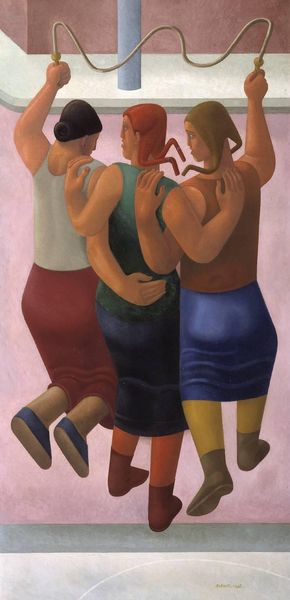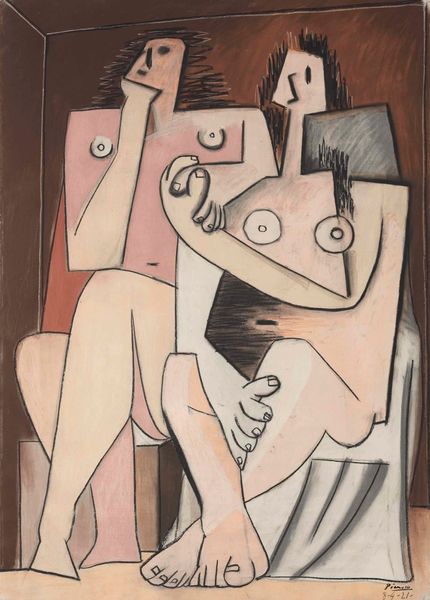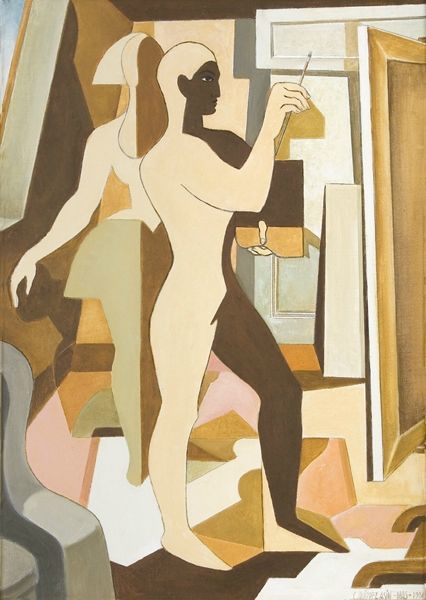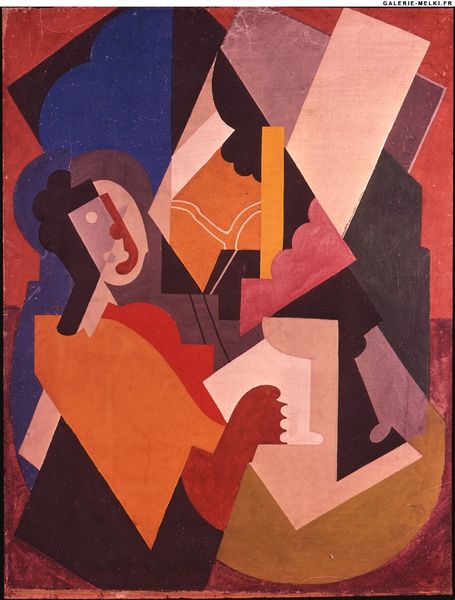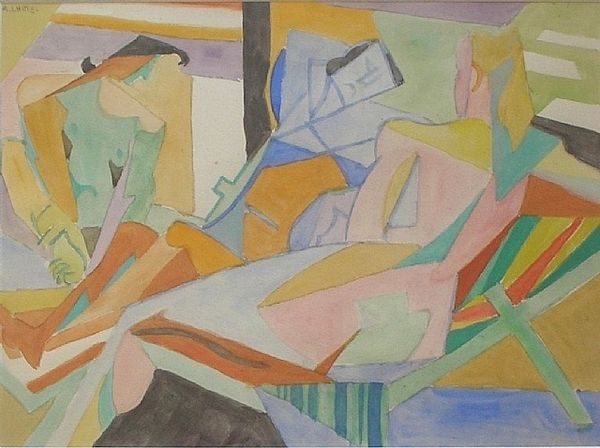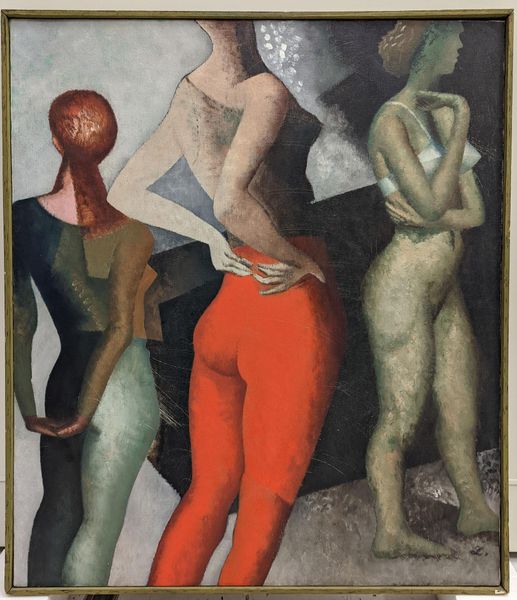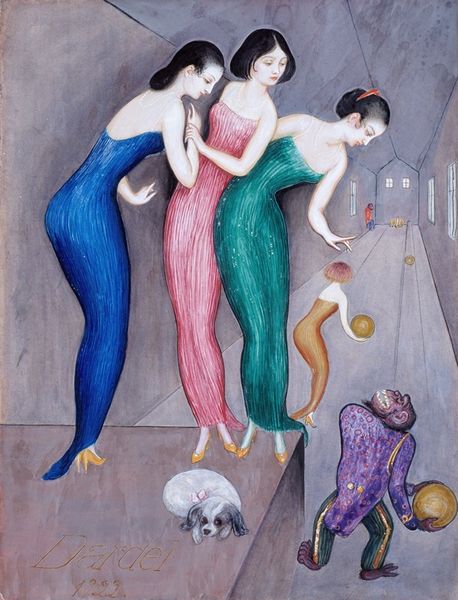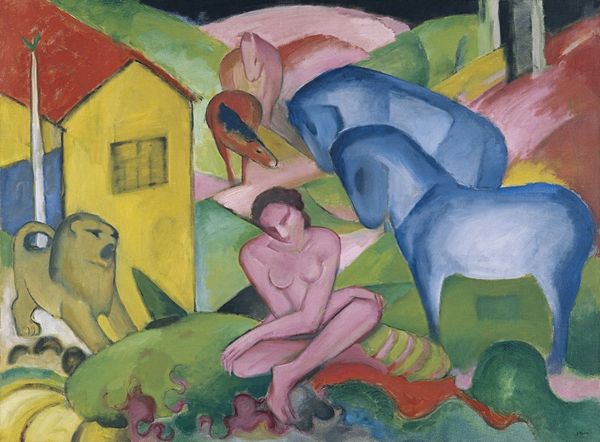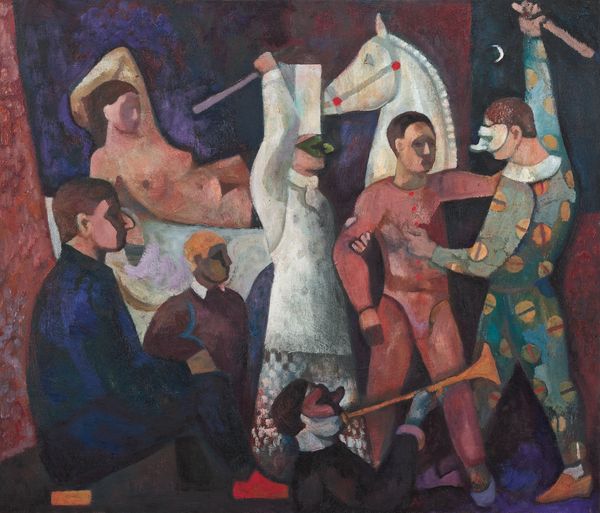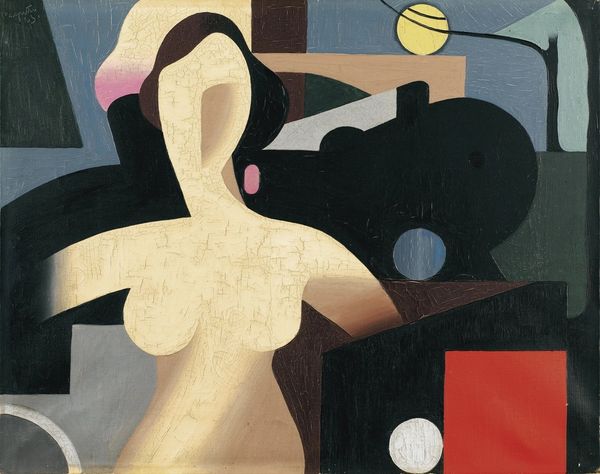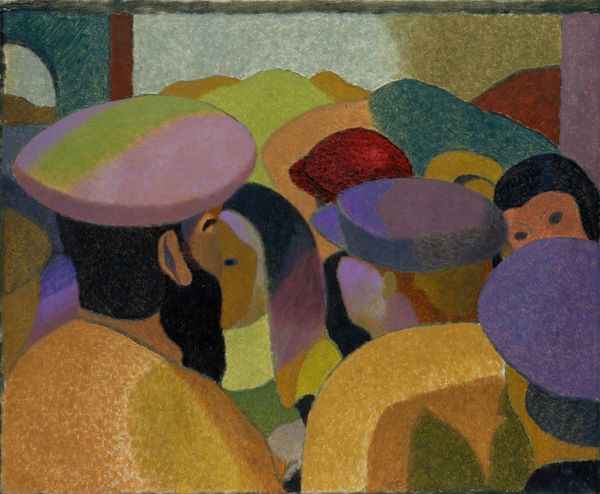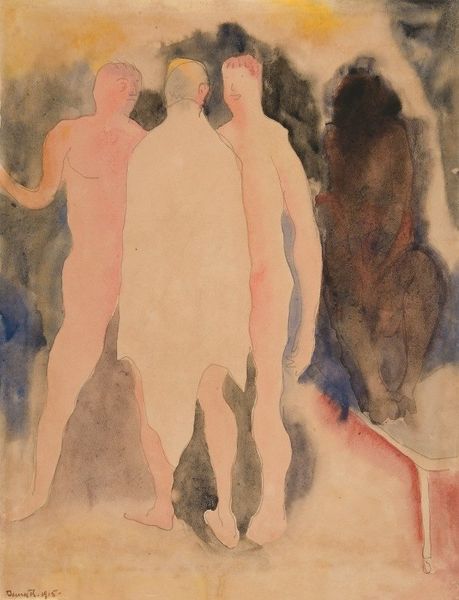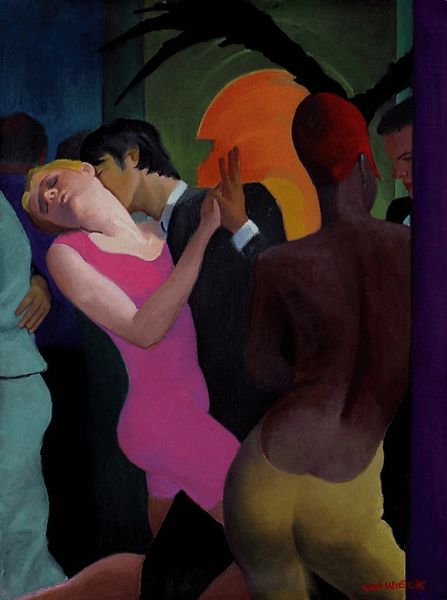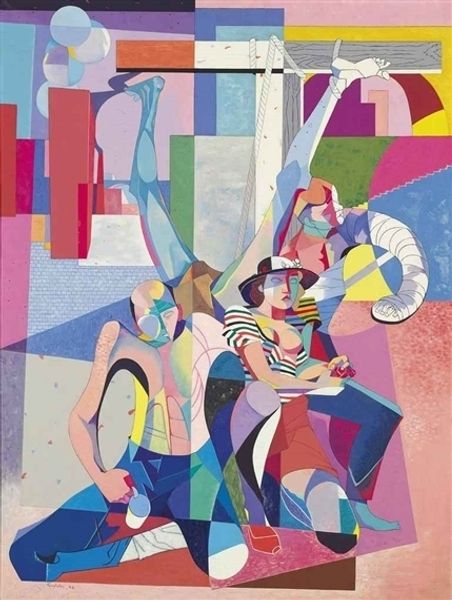
Dimensions: support: 432 x 330 mm
Copyright: © The estate of William Roberts | CC-BY-NC-ND 4.0 DEED, Photo: Tate
Editor: This is "The Char" by William Roberts. I’m intrigued by its almost geometric figures and the earthy palette. What do you make of the composition? Curator: The figures are rendered with a deliberate simplification. Note how the artist uses color to define form, almost sculpting the figures with blocks of pigment. The interplay of light and shadow creates a sense of depth, yet the composition remains decidedly planar. Editor: So, you're saying the focus is less on realism and more on form and color? Curator: Precisely. The artist invites us to contemplate the formal relationships within the canvas, rather than seeking narrative depth. The beauty lies in the arrangement of shapes and hues. Editor: I see it now; it’s like a puzzle of forms. Thanks for pointing that out! Curator: My pleasure. Considering the formal elements allows us to perceive the artist's intention more clearly.
Comments
Join the conversation
Join millions of artists and users on Artera today and experience the ultimate creative platform.
tate 6 months ago
⋮
Before the First World War William Roberts was a Vorticist, producing almost abstract paintings that evoked the energy of the modern city. After serving in the war he painted scenes of everyday life. Typically, his figures are reduced to simple forms, so that their bodies and limbs are tubular and their faces almost caricatures.Having painted scenes of leisure and pleasure such as restaurants and cinemas, Roberts took an increasingly wry and humorous look at human behaviour. This image of women gossiping while another cleans her front step and men look on would have been a typical street scene. Gallery label, July 2007
